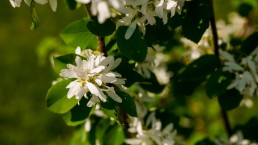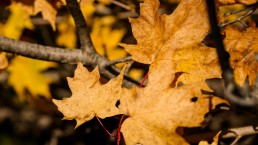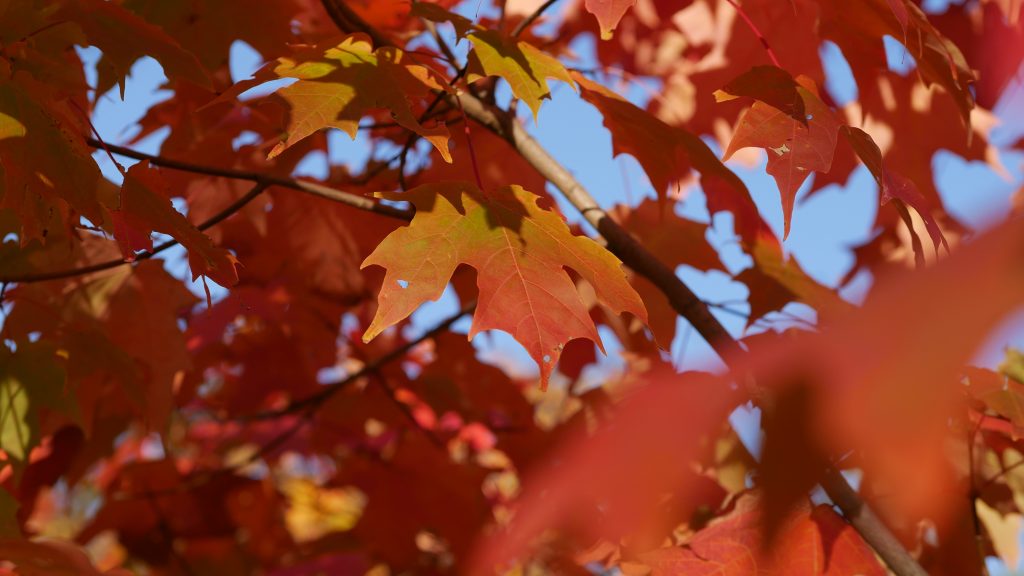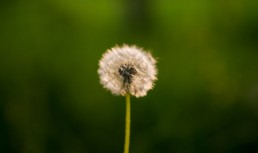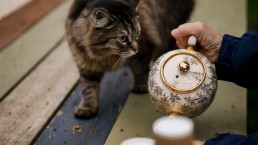Preparing for Allergy Season
Spring is Almost Here!
Now is the perfect time to get a jump-start on your seasonal allergies! Stinging Nettle season will be soon upon us and we can make great use of this amazing herb and some honey from our own cupboards. First, some information on allergies, the herbs and nutritional supplements to aid allergy sufferers, tincture formulas and nettle soup recipes. For more information on Stinging Nettle, we’ll be posting a Materia medica soon!.
The Gut and Allergy Connection
All of the symptoms associated with allergies are signs of inflammation: redness, swelling, and itching. To help get rid of allergies, you have to get rid of inflammation and hyper-reactivity. The place to start is in your gut.
One of the major jobs of your digestive system is to provide an interface between the external world (foods, allergens, bacteria, etc.) and your blood stream. It does this in the stomach by using natural digestive acids to break down potentially allergenic proteins and in the intestines via a layer of barrier cells that prevents these proteins from getting into your blood stream. You also have a whole host of special bacteria in your gut, as well as immune cells, whose job it is to break down and get rid of proteins and other molecules that can cause you to get sensitized to them, leading to gut – and systemic – inflammation.
How to restore your gut:
- Clean Up Your Diet – Remember to eat lots of fresh vegetables, fruits, seed and nuts. Eliminate sugar, soda, preservatives, additives, dyes and other non-food junk, and drastically decrease dairy intake (yes, if you want your allergies to go away forever, you will have to do this – sorry). Part of cleaning up your diet is to eat foods with as few chemicals and additives as possible. I highly recommend buying organic or visiting your local farmers market.
- Heal Your Gut
- This is done with an Elimination Diet. An elimination diet is 2 weeks of eating a simple diet from which you have removed the most common food triggers including gluten, sugar, dairy, eggs, soy, coffee, soda, and artificial ingredients – as well as anything you typically crave (i.e., sugar, carbs, salty snacks).
- If you have constipation, you’ll want to deal with this now. Get plenty of fiber in your diet and drink ample water, too. Supplements such as flax seed, psyllium, and magnesium citrate are safe for most people to take daily. For kids, slippery elm, which tastes like maple syrup, may be used, 1-2 tsp daily in oatmeal or a smoothie. The goal is 1 healthy bowel movement every day.
- After 2 weeks on the Elimination Diet, start taking a good quality digestive enzyme product (you can give these to kids over 4 yrs, too). This is safe for pregnant and breastfeeding women, too.
- After another week, add in a good quality probiotic. Also safe for pregnant and breastfeeding women, and for kids.
- The following supplements can now be taken for about a month (up to 6 months) to help to heal the intestinal lining: Tumeric, Aloe Vera, and Marshmallow root; (these are fine for children) are some of the most effective herbs for healing the gut lining.
- Zinc: 5-10 mg/day for children 4-7 years, 10-20 mg/day for children to age 12, 25-40 mg/day for older children and adults
- An antioxidant supplement containing vitamins A and carotenoids, C, E, and selenium. These are often found in a multivitamin. Pregnant women should get these from their prenatal vitamin only.
- Fish oil: Personally, I have taken daily for years, love it! For kids you can put the oil into smoothies. Fish oil is important for general health in pregnancy and breastfeeding, too.
- Please visit your doctor when necessary!
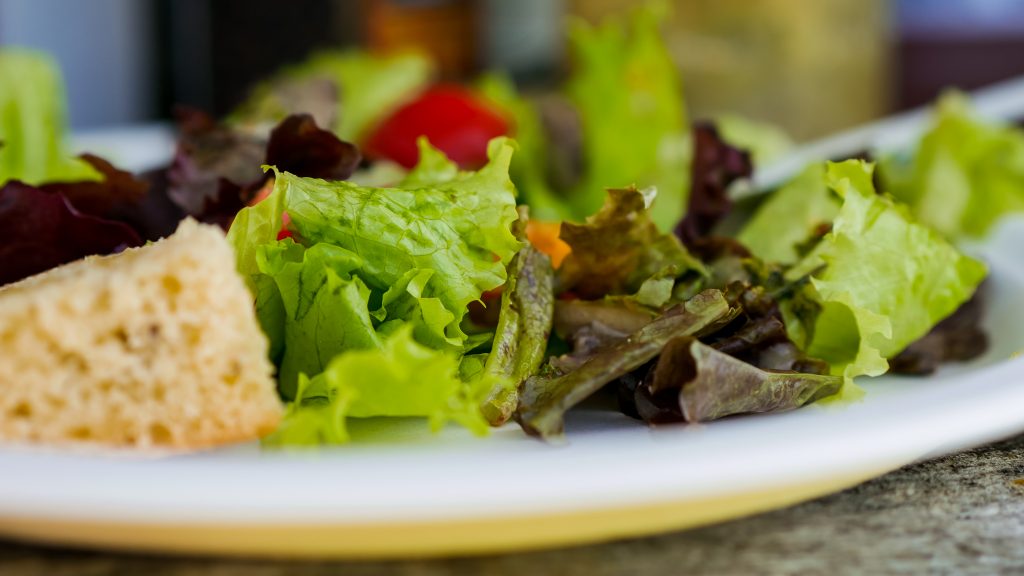
Detox The Liver
The liver removes many of the body’s major toxins and affects allergies. Martin Healy says that key ways to boost your liver function include cutting out alcohol, smoking, caffeine and embarking on a detox program.
A glass of water containing freshly squeezed lemon each morning will help. Antioxidants and vitamins found in fresh fruits and vegetables will reduce liver inflammation and boost immune function, while foods like brussels sprouts will increase the activity of important liver enzymes.
Herbs and Nutritional Supplements for Seasonal Allergies
These herbs and nutritional supplements are best taken on a daily basis. Taking them before allergy season even starts, can prevent symptoms altogether. They can also be used as needed.
- Stinging Nettle: Nettles are used as spring tonics and a general detoxifying remedy. In some cases of rheumatism and arthritis, nettles can be astoundingly successful. In childhood eczema nettles are a specific remedy and are beneficial in all the varieties of this condition especially in nervous eczema.
Nettles in high doses can have amazing results for allergy sufferers. It has been used for centuries to treat allergy symptoms – particularly hay fever – which is the most common allergy problem. It contains biologically active compounds that reduce inflammation. Dr. Andrew Wiel M.D. author of Natural Health/Natural Medicine says he knows of nothing more effective than nettle for allergy relief. This statement is backed up by studies at the National College of Naturopathic Medicine in Portland, Oregon. Decongestants, antihistamines, allergy shots and even prescription medications such as Allegra and Claritin treat only the symptoms of allergies and tend to lose effectiveness over a period of time. They can also cause drowsiness, dry sinuses, insomnia and high blood pressure. Nettle has none of these side effects. It can be used on a regular basis and has an impressive number of other benefits most notably as a treatment for prostate enlargement. Nettle is easily available in tea and tincture form, and also can be eaten like spinach in the spring, made into soups and smoothies. Nettles are prized for being highly nutritional.
- Raw Local Honey: Raw honey is great, but raw local honey is even better! Raw local honey contains pollen that is specific to your area and therefore can really help those local seasonal allergies. Taking a spoonful of raw honey once or twice a day is a great help. It is also advised to begin taking local honey a few months prior to the allergy season; this gets the pollen introduced into the body and gradually builds up the body’s tolerance to seasonal allergies. Honey is not recommended for babies under 12 months, due to infant botulism.
- Vitamin C: To assist with a malfunctioning immune system try lemon water and orange water (not juice – no sugar), cultured vegetables and strawberries.
- Quercetin: 500 mg daily (half that for kids). Quercetin is a plant pigment found in many common herbs and foods, and a very reliable anti-inflammatory nutritional supplement. It helps with gut repair, boosts the immunity in your mucus membranes reducing reactivity to seasonal allergens, and also helps reduce food allergies. There is conflicting data on whether it is safe in pregnancy, therefore I would not recommend it for those who are pregnant.
- Zinc: Take an age appropriate dose daily.
- Please visit your doctor when necessary!
Traditional Allergy Tincture Blend
- Nettle (Urtica dioica, spring tops) 0.30 ml
- Astragalus (Astragalus membranaceus, root) 0.25 ml
- Reishi (Ganoderma lucidum, thallus) 0.14 ml
- Schisandra (Schisandra chinensis, fruit) 0.14 ml
- Southern Prickly Ash (Zanthoxylum clava-herculis, bark) 0.07 ml
Keep an eye out for another blog full of Stinging Nettle Recipes soon!
Talking About Maple Syrup
Spring is on it's way...
My first experience with making maple syrup by myself was for my son’s science fair project on evaporation. That was over 25 years ago! I had as much fun as the boys. First, we tapped a couple of old sugar maples. Then waited anxiously for the sap to flow. When it was time to begin our experiment, we evaporated just enough sap to make syrup and then continued the evaporation process till we make Maple Candy, such a yummy experiment!
Believe it or not, but I personally go through a 4L jug of syrup per year! We LOVE it!
When is maple syrup tapping and harvesting season?
Maple sugar season in Ontario normally starts in the late winter and ends in the early spring. The sugar maple’s sap starts to flow after a hard freeze. The best time for maple sap collection is when nights are freezing cold and are followed by sunny and rather warm days that are between 40 and 50 degrees Fahrenheit. On days when these conditions are not reached, the flow of sap will be slow. When optimum conditions are reached, the sap will flow quickly, on these days, we should check often so that the buckets don’t run over! The entire sap collection season only lasts from three to four weeks. When the temperature remains above freezing, or when the maple trees begin to form buds, it’s time to stop collecting sap from the trees. If maple syrup is made from sap collected once buds have begun to form on the maple trees, the syrup will smell bad and have a poor flavor.
How long does maple syrup last?
Maple syrup never spoils! This is due to the high concentration of sugar in maple syrup. Maple syrup should be kept in the refrigerator once it’s opened to discourage mold from growing on the syrup. Should mold grow on maple syrup, it’s safe and easy to remove. Just scoop the mold off the top of the syrup with a spoon and discard the mold or strain the maple syrup into a clean container through a piece of cheesecloth. Maple syrup kept in a cold place such as a refrigerator is less likely to grow mold than maple syrup kept in a cupboard or other warm place.
How do you know when the maple syrup is done?
We have chosen to use a very simple method, the spoon test. Dip a spoon into the boiling sap and watch the sap drip back into the pan. If the sap still needs to boil more, the sap will fall off the spoon in separate droplets. When the syrup starts to run off the spoon in a sheet or a stream, then it’s almost done. It will also start to look more like syrup and less like sap at this point. If you think the syrup is done, take it off the fire and let it cool a bit. As it cools it should start to thicken if it has turned into syrup. If the syrup is still not thick enough it can be returned to the heat and boiled some more.
Which maple tree do you get syrup from?
There are three different species of maple that produce the kind of sap from which maple syrup is usually made, Sugar Maple (Acer saccharum), the Black Maple (Acer nigrum), and the Red Maple (Acer rubrum). These three species of maple have very high sugar contents in their sap. Red Maples offer a shorter sugar season because they tend to bud earlier than either Sugar or Black Maples. You can also tap the Manitoba Maple (Acer negrundo), the Silver Maple (Acer sacharinum), and the Bigleaf Maple (Acer macrophyllum). Birch and Black Walnut trees can be tapped for syrup. Next year I am going to try Black Walnut just for fun!
Does maple syrup have potassium in it?
One tablespoon of maple syrup contains 42 mg of potassium. Not only does maple syrup contain potassium, but it also contains calcium, zinc, manganese, magnesium, and iron. The darker the maple syrup, the more of these minerals it contains. Maple syrup also contains trace amounts of vitamins B1, B2, B5, B6, biotin and folic acid.
Natural Bug Repellents For You and Your Pet
Natural Bug Repellents For You and Your Pet
There’s nothing like the great outdoors! You and your pets are outside enjoying the fresh air, and along come those pesky, biting creepy-crawlies. How do we protect ourselves and our pets from not only bites from fleas, but the mosquitoes that carry West Nile Virus and the dreaded Lyme’s carried by Ticks! Most mainstream repellents, such as OFF, contain harsh toxins that negatively affect the body – why expose yourself to such things when there are natural bug repellents that are even more effective than the mainstream ones?
Did you know? only female mosquitoes bite (males feed on flower nectar) because they require blood to produce eggs. Their mouth-parts are constructed so that they pierce the skin, literally sucking the blood out. Their saliva lubricates the opening.
What’s So Bad about Mainstream Repellents?
Mainstream repellents usually contain DEET, which is so strong that upon contact, it melts plastic! Who wants this absorbed into their bodies or their pets?
After 30 years of studies, the following adverse health effects of DEET were:
• Impaired brain cell function
• Memory loss
• Seizures
• Hypo-tension
• Nausea and vomiting
• Headaches
• Skin irritation, hives, blistering
• Shortness of breath
• Muscle weakness
• Muscle and joint pain
• Pain, irritation, and watering eyes
• Tremors
Keep in mind that children’s skin and some animals are more absorbent, which makes chemicals exert more potent effects. Pregnant woman should also be very careful applying DEET. Why would we choose to put poison on our skin or that of our pets?
Pet House Keeping – Prevent Lice, Mites and Fleas
Clean your pets bedding regularly; whether it’s a stall, pen, cage, run or kennel. It would be ideal to have a pen used six months on and six months off. After cleaning out my chicken coop and dog run I sprinkle Diatomaceous Earth. It truly is a MUST HAVE for any pet owner! I LOVE it!
Also, you can try Rotenone. It is an odorless, colorless, crystalline isoflavone used as a broad-spectrum insecticide, and pesticide. It occurs naturally in the seeds and stems of several plants, such as the jicama vine plant, and the roots of several members of Fabaceae. It was the first described member of the family of chemical compounds known as rotenoids.
Cayenne pepper tincture in a spray bottle can also be used to fumigate.
Homemade Natural Bug Repellents Using Essential Oils
While Essential Oils (EO) are amazing, they are not our first choice in repellents, a vinegar base is. Many animals simply can not tolerate EO. We have provided a couple recipes containing EO for those of you who tolerate well and further below is our vinegar recipe.
Recipe 1 (For Humans)
Ingredients:
- ½ cup witch hazel
- ½ cup apple cider vinegar
- 40 drops essential oils (eucalyptus, lemongrass, citronella, tea tree or rosemary)
- one 8-ounce glass spray bottle
Directions:
- Mix witch hazel, apple cider vinegar and essential oils in 8-ounce glass spray bottle.
- Spray over all portions of the body but avoid repellent in eyes and mouth.
Recipe 2 (For Humans)
Ingredients
- 30 drops geranium essential oil
- 20 drops lemon eucalyptus essential oil
- 20 drops lavender essential oil
- 10 drops rosemary essential oil
- 1 Tablespoon vodka or rubbing alcohol
- 1/2 cup Witch Hazel
- 1/2 cup water (or vinegar)
Directions
- Place essential oils in glass spray bottle. Add vodka or alcohol and shake well to combine.
- Pour in witch hazel and shake to combine.
- Add 1/2 tsp vegetable glycerin if using. This is not necessary but helps everything stay combined.
- Add water and shake again. Shake before each use as the oils and water will naturally separate some over time.

Natural Lemon Skin Tonic/Repellent
The following tonic is from our favourite animal herbalist, Juliette de Bairacli-Levy. Much success has been found as a general skin toner, parasite repellent, and treatment for mange.
Ingredients:
- 1 lemon, including peel
- 1-pint water
Directions:
- Thinly slice a whole lemon, including the peel
- Add to a 1-pint of near-boiling water and let it steep overnight
- Strain out lemons
- Sponge the solution onto the animal’s skin and let it dry. Can be used daily for severe skin problems involving fleas.
Natural Bug Repellents Using Vinegar
Family and Pet Natural Bug Repellent and After Bite Spray!
While the formulas above look great, we have chosen a vinegar-based formula for our furry friends, whose bodies cannot break down certain essential oils. This formula will work for our pets; including dogs, cats, bunnies, horses and even our own family!
Ingredients:
- 2 tbsp chopped fresh lavender flowers
- 2 tbsp chopped fresh rosemary
- 2 tbsp chopped fresh mint
- 2 tbsp chopped fresh sage
- 2 tbsp chopped fresh marjoram
- 2 tbsp chopped fresh anise hyssop
- 4 cloves garlic (peeled and crushed)
- 1-quart white wine or apple cider vinegar (preferably raw)
Directions:
- Toss herbs and garlic together in a one-quart mason jar, cover with vinegar and allow them to marinate for seven to ten days in a sunny location. After ~6 weeks, strain the vinegar through a fine-mesh sieve into a second, clean glass jar.
- Store at room temperature until ready to use, bottle and label.
Cautionary: Sage Contraindications – if you are currently taking diabetes, anticonvulsant or sedative medications.
___________________________________________________
This specific vinegar composition is said to have been used during Black Plague to prevent the catching of this dreaded disease, yes, this is Four Thieves Vinegar! Other similar types of herbal vinegars have been used as medicine since the time of Hippocrates.
Many herbalists appreciate its antiviral and antibacterial properties. It can also be used as a tincture for various illnesses. The apple cider vinegar on its own is good as a coat conditioner, balance PH, skin toner, good for tendons and ligaments, nail fungus and repels fleas, ticks and mosquitos.
It can also be used as a spray cleansing agent – to clean and sterilize kitchen counters or bathrooms; indeed, many of the herbs possess strong antimicrobial effects and vinegar, in any case, makes an excellent natural cleanser.
This beautiful combination of herbs combines a vibrantly herbaceous and slightly floral concoction to enliven plates of freshly picked salad greens, edible flowers, sweet lettuces and other summer greens. Simply mix with a good quality olive oil in a simple vinaigrette for a delightful salad. It also makes an excellent seasoning for braised meats and vegetables.
Ideal for camping – in one bottle you have a cornucopia of medicinal actions and uses, that’s the beauty of natural medicine!
Vinegar is medicine in its own right! Used to maintain healthy coats and skin; astringent and alkalizing. Vinegar repels lice and is great as a afterbite. I use it directly in my bath water, it leaves your skin feeling soft and rejuvenated!
Dandelion: Materia Medica
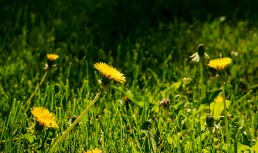
Dandelion
Botanical name: Taraxacum Officinal
Pertinent Information on the Plant
- Alterative (blood purifier)
- Hepatics (having to do with the liver)
- Diuretic (increases urine flow)
- Anti-rheumatics (easing pain of rheumatism and inflammation of joints and muscles)
- Antibilious (helps body remove excess bile and thus aid in cases of biliary and jaundice conditions)
- Laxative (substance that acts to loosen the bowels contents)
- Cholagogues
- General Tonic (liver, blood, kidneys)
- Digestive bitter (improves digestion)
- Varicose veins
- Skin conditions
- Bitter
- Water retention
- Builds energy
- Nervine, high in calcium, iron
- Herpes
- Rashes
- Beats out milk thistle for taking care of liver
- Old name Pissinlct – makes us pee and pee
- Leaf – diuretic (increases urine flow)
- Root – liver – anti-inflammatory
- Good for gas and bloating
- Whole dandelion is good for hypertension
Habitat and Growing area
- Found widespread colouring meadows and waste places in April – May. Dandelion is found here in Ontario on our farm, lawns and disturbed soil
Extra Notes
- Taste is bitter and sweet. Smells earthy, very delicious cup of tea
- Used in many nutritious and digestive tea blends
Reference Books:
Holistic Herbal, by David Hoffmann
Pages: 27, 31, 52, 54, 61, 62, 71, 78, 79, 85, 89, 101, 109, 111, 121, 128, 143-147, 156, 182, 189, 196, 205, 243
The Way of Herbs, by Michael Tierra
Pages: 12, 13, 32, 35, 36, 37, 127-128, 314-315
The Complete Encyclopedia of Herbs, by Nico Vermeulen
Page: 285
Family Herbal, by Rosemary Gladstar
Pages: 19, 25, 28, 32, 51, 55, 78, 85, 91, 94, 100, 102, 105, 189, 193, 200, 201, 203, 206, 218, 219, 221, 227, 255, 256, 263, 277, 326-27
Peterson Field Guide: Easter/Central Medicinal Plants and Herbs, by Steven Foster and James A. Duke
Pages: 145, 146
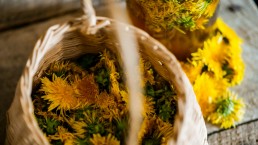
Motherwort: Materia Medica
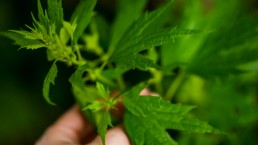
Motherwort
Botanical name: Leonorus cardiaca
Pertinent Information on the Plant
- Emmenagogue (agent that regulates and induces normal menstruation)
- Suppressed menstruation
- Female disorders
- Relieving menstruation cramps
- Menopause (water retention, hot flashes, M=mood swings)
- Aids in child birth
- Heart tonic
- Heart palpitations
- Add to cough formula when someone has bad heart
- Add to asthma formula when someone has a bad heart
- Nervine relaxant (calm nervous tension and nourish the nervous system)
- Sedative (exerts a soothing, tranquilizing effect on the body)
- Antispasmodic (calming nervous and muscular spasms or convulsions)
- Hepatic (having to do with the liver)
- May be used to alleviate false labor pains
- Diuretic (increases flow of urine)
- Carminative (causing the release of stomach or intestinal gas)
- Antioxidant (prevents or inhibits oxidation)
- Fevers
- Stomach aches
Habitat and Growing area
- Found on our farm in Ontario Canada
- Likes to grow in disturbed ground; pasture land and fence line
Extra Notes
- A beautiful addition to heart tonic tea and menstruation teas
Reference Books:
Holistic Herbal, by David Hoffmann
Pages: 26, 27, 28, 38, 39, 65, 78. 99, 101, 104, 144-147, 183, 215
The Way of Herbs, by Michael Tierra
Pages: 158-159
The Complete Encyclopedia of Herbs, by Nico Vermeulen
Pages: 168
Family Herbal, by Rosemary Gladstar
Pages: 203, 205, 228, 261, 295, 350
Peterson Field Guide: Easter/Central Medicinal Plants and Herbs, by Steven Foster and James A. Duke
Pages: 182, 183
Tinctures
Adults
General adult tincture dosage: 15 – 30 drops / 3x daily
or
Dosage of a tincture for a chronic problem is ¼ teaspoon 3x daily.
Dosage for acute situations is ⅛ – ¼ teaspoon every half hour to an hour.
Children
Tinctures (vinegar base):
Young’s Rule = ¼ of adult dosage
Cowling’s Rule = ⅙ of adult dosage
Teas
General guideline:
If an adult dose is 1 cup of tea:
Children 1 year or less = 2 teaspoons
Children 2 – 4 years = 3 teaspoons
Children 4 – 7 years = 1 tablespoon
Children 7 – 11 years = 2 tablespoons
or
Tea is usually given in a dose of 1 – 2 eye droppers full to ¼ cup to children under one year, ¼ – 1 cup every few hours to toddlers and older children. For children over 1, teas can be sweetened with honey or maple syrup. Honey is excellent for treating coughs, too! (Do NOT give honey to babies under 2 years old – it can cause infant botulism).
February 14, 2021

